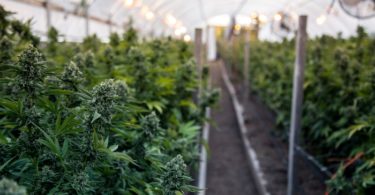Chances are you’d struggle to find an industry creating more metaphorical and literal buzz right now than marijuana. After lurking in the shadows for decades, the cannabis industry has had the proverbial green carpet rolled out in Canada, where recreational weed is now legal, and in 33 U.S. states where medical cannabis has been legalized in some capacity. The sky looks to be the limit for the cannabis industry.
Unfortunately, the sky has also been the limit for the traditional fundamental metrics used to gauge the value of publicly listed companies. Just as shaking a pinball machine sends it into “tilt,” a thorough review of the underlying fundamentals of most pot stocks would probably cause investors’ brains to “tilt.”
Among more than 50 reviewed marijuana stocks, a majority are expected to lose money in fiscal 2020 — quite a few pot stocks operate on nontraditional calendar years — or, at best, earn a marginal profit that results in a worrisome triple-digit forward price-to-earnings ratio. Poor Aurora Cannabis has an infinite forward P/E, with Wall Street calling for nil ($0.00) in per-share profits next year.

IMAGE SOURCE: GETTY IMAGES.
Say hello to the market’s cheapest pot stocks
However, there are a small handful of diamonds in the rough. Following the aforementioned screen of 2020 consensus earnings per share estimates for more than four-dozen marijuana stocks, three emerged with forward P/E ratios of less than 20. And given just how rapidly the marijuana industry is expected to grow over the next decade, this would make these three pot stocks potential bargains.
Let’s take a closer look at these generally under-the-radar “value” stocks in the cannabis industry.
Trulieve Cannabis: Forward P/E of 14.1
Speaking purely on the basis of forward price-to-earnings ratio, no marijuana stock is a better value for investors right now (assuming Wall Street’s ever-changing profit estimates are right) than U.S. vertically integrated dispensary operator Trulieve Cannabis (NASDAQOTH:TCNNF). For added context, this is about 20% lower than the consensus forward P/E for the broad-based S&P 500.
What has made Trulieve Cannabis such a money machine is the company’s laser focus on the Florida medical marijuana market. Trulieve has opened 27 retail locations in Florida and recently expanded into California and Massachusetts via acquisitions. But it’s the relatively low costs tied to staying close to its roots in Florida that have paid off big-time for Trulieve.

IMAGE SOURCE: GETTY IMAGES.
One of the bigger near-term catalysts for the company, aside from entering the California market, is that the Sunshine State made smokable cannabis legal for medical marijuana patients two months ago. Before that point, smoking dried flower wasn’t legal in Florida. Opening the door to the most traditional form of cannabis consumption (even if smoking dried flower has lost some of its relevance over time) should help draw in additional foot traffic to licensed dispensaries.
Just how good has Trulieve Cannabis been? In 2018, the company generated $102.8 million in sales, a better-than-quintupling from the previous year, while delivering a gross margin of 67%. Even excluding the nearly $37 million boost Trulieve received from fair-value adjustments to biological assets, it would have generated over $38 million in operating income in 2018. This dispensary operator is on fire, and investors should take note.
Planet 13 Holdings: Forward P/E of 16.4
Arguably the most surprising pot stock among the value plays list is dispensary operator Planet 13 Holdings (NASDAQOTH:PLNHF), whose cannabis SuperStore off the Strip in Las Vegas is the largest in the United States. At a consensus forward price-to-earnings ratio of 16.4, Planet 13 Holdings also has a lower forward P/E than the S&P 500 for 2020.
As someone who’s visited the Planet 13 SuperStore firsthand, I can rightly say it’s developing into something special. Currently spanning 16,200 square feet, the eventual complex will reach 112,000 square feet (that’s bigger than your average-sized Walmart) and feature a pizzeria, coffee shop, events center, and consumer-facing processing center. Many of these upgrades are expected to be complete during the third quarter.

IMAGE SOURCE: PLANET 13.
What’s most notable about the Planet 13 SuperStore is the breadth of selection and the incorporation of technology. Aside from consumers willingly waiting in line for their own personal budtender to show them around the store, self-pay kiosks line important cases, providing a means for consumers to browse and buy at their convenience. The store’s layout is also set up to drive margins, with high-margin derivative products located closest to the door and points of sale.
The early results have been promising. Since opening to the public in November, the average number of visitors per day has climbed from 1,848 to 3,222 in April. What’s more, the average number of customers each day has risen from 1,406 in November to 1,962 in April, with average tickets rising more than 12% to $89.62 over this six-month span. It’s a little early to tell if this model is replicable in additional locations, but the Planet 13 SuperStore looks like a big hit (pardon the pun) in the early going.
Charlotte’s Web Holdings: Forward P/E of 19.8
A third and final marijuana stock with value written all over it is hemp-oil and cannabidiol (CBD) product manufacturer and distributor Charlotte’s Web Holdings (NASDAQOTH:CWBHF). With a forward P/E ratio of 19.8, the company is nominally pricier than the S&P 500, but Wall Street also expects the company’s sales will grow by 111% in 2019 and another 120% in 2020. Let’s see the average S&P 500 company do that!
Charlotte’s Web has seen a pretty steady uptick in demand for its hemp oil and hemp-based CBD products for more than two years. CBD is the nonpsychoactive cannabinoid best known for its perceived medical benefits. Although CBD was legal in most U.S. states as of the fourth quarter of 2018, hemp-derived CBD became legal nationwide following the signing of the Farm Bill in December. This figuratively and literally opens new doors for Charlotte’s Web’s products.

IMAGE SOURCE: GETTY IMAGES.
According to the company’s preliminary first-quarter report, released just shy of two weeks ago, sales growth remains exceptionally strong. Organic revenue looks to come in between $21 million and $22 million, which compares with $13.1 million in Q1 2018 and $7.1 million in Q1 2017. More importantly, e-commerce sales represent 50% of its revenue, and the number of retail stores its products are in has surpassed 6,000, as of May 8, up from 3,680 stores as of Dec. 31, 2018. Having such a high percentage of sales coming from e-commerce is huge, because this is the company’s lowest-cost means of selling its hemp-oil and hemp-derived CBD products.
And things are expected to get even better. After planting 300 acres of hemp and harvesting 675,000 pounds of raw hemp in 2018, the company plans to double its planted acreage to 600 acres to cover an increase in demand for 2020 and 2021. Among marijuana value stocks, Charlotte’s Web definitely should be in the discussion.
More at: Fool.com






